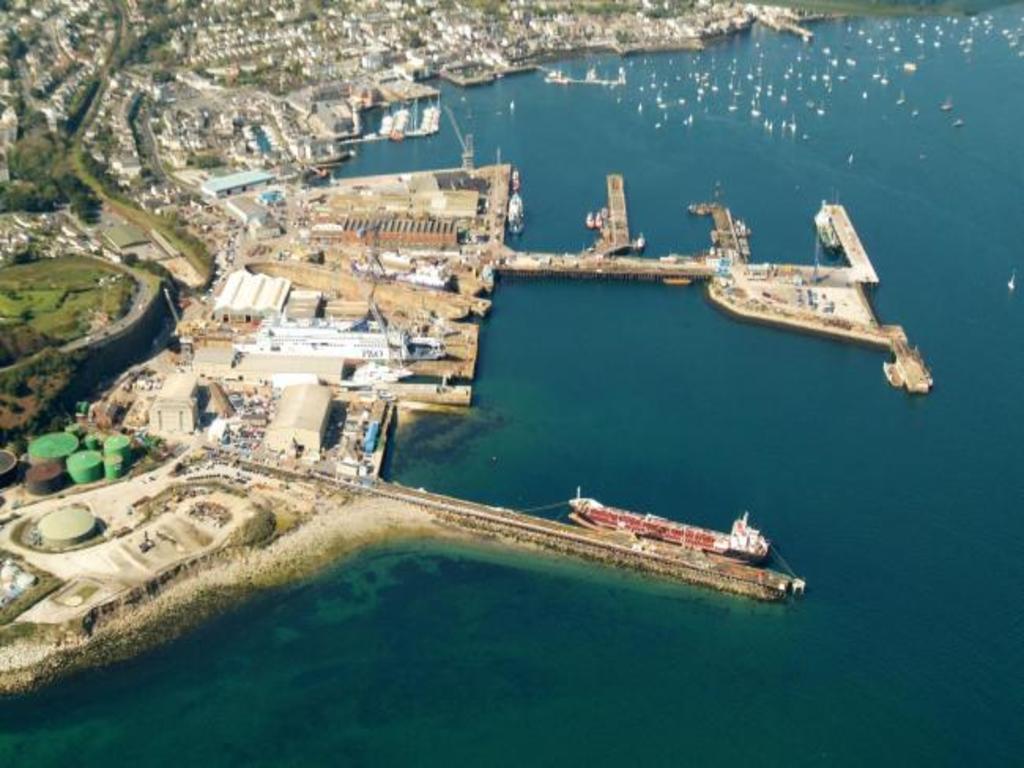
The port industry is an asset intensive industry that is increasingly experiencing capital constraints. The world is experiencing exploding international trade, leading to an associated port and logistics chain congestion. Large investments are needed to increase the port capacity and productivity. As a result, if we take a look at some of the latest commercial deals of port businesses worldwide, we can see that there have been unprecedented price premiums, and thus a need to know and recover the true value of the infrastructure investments. Alongside, we are also observing new forms of ownership and investments and evolving financing models that necessitate developing reliable ‘fair market’ asset valuations of port resources.
Before we deep dive into the asset management and maintenance in the ports and shipping industry, let’s get a quick understanding of some important terminologies.

Ports vs Terminals
A portis defined as an area on both land and water, whether on a seacoast or a riverbank, that provides facilities for shipping vessels to load and unload their cargo.
This area, contained within ‘port limits’, will have been established over years of increasing or declining trade patterns and therefore is defined as the ‘human set limits’. There may be several harbours and/or terminals within the port limits.
A terminalis defined as a single man-made facility that may have several berths which handle vessels and cargo.
There are two types of terminals:
- Those within sheltered waters with a land bridge, such as Jose Gas Terminal in Venezuela.
- Those in open often deep water exposed to elements with no land bridge, such as Louisiana Offshore Oil Port (LOOP) in Louisiana, USA.
Each terminal usually has a primary operator, but there may also be a common-user facility under the control of the Port Authority or third party.
Going further, here are some more important terminologies used in this industry:
- A berth is an area where the ship is moored onto the bollards and where the cargo is loaded or discharged on and off the ships. The land area surrounding the berth is sometimes referred to as a quay.
- Jetties are large, man-made piles of boulders or concrete that are built on either side of a coastal inlet. jetties are built so that a channel to the ocean will stay open for navigation. They are also built to prevent river mouths and streams from meandering naturally. Jetties completely interrupt or redirect the longshore current.
- Breakwatersare structures constructed near the coasts as part of coastal management or to protect an anchorage from the effects of both weather and longshore drift. Breakwaters result in the dissipation of energy and subsequent creation of relative calm waters for easy navigation of ships.
Large ports handle a range of activities, including loading and unloading of ships, cargo and containers, customs activities, And therefore, one port could contain terminals for
- Container Terminal
- Ro-Ro (Roll On-Roll Off) Terminal (popularly known as Car Terminal)
- Oil & Gas Terminal
- Bulk Cargo Terminal
- Multi-Purpose Terminal
Each port or terminal will in turn have several berths / quays, which usually have shore equipment for handling cargo, covered sheds, open cargo storage areas and more where the cargo is discharged, loaded and may be stored.
Statistics and Facts
The global seaborne container trade accounts for approximately 60 percent of all world seaborne trade, which was valued at around 12 trillion U.S. dollars in 2017. While the quantity of goods carried by containers has risen from around 102 million metric tons in 1980 to about 1.83 billion metric tons in 2017, vessels too have increased their capacity to accommodate for the increasing demands.
Here is an overview of the busiest ports across the globe categorised on the basis of volume:

An estimated 90% of world trade is facilitated by maritime shipping, and as trade volumes continue to increase, the world’s busiest ports continue to grow larger and more efficient to meet demand.
In fact, in just the last four years, the median annual volume of the top 50 ports jumped from 5.49 to 5.86 million twenty-foot equivalent units (TEUs).
Port Structure Maintenance
During cargo handling operations in ports and harbours, discharges and emissions can and do occur, often accidentally. Handling of dry bulk cargo including grain, coal, iron ore, china clay may cause the production of dust. Handling of liquid bulks may require discharge through pipelines, which provides the potential for leaks, emissions and spillages. The cargo vapour emissions can also result in atmospheric pollution. Releasing cargoes directly into the marine environment may have direct and indirect environmental effects too.
Harbour authorities make an important contribution to reducing the risk of such events by undertaking their responsibilities as conservancy authorities over various measures to provide for navigation safety and asset management.
Risks associated with Port Infrastructure Failure
Port operations entail many risks and related hazards such as oil spills, collisions, grounding, truck accidents, injuries, and personnel going over-board. Timeline inspection of infrastructure can help reduce such risks and diminish their subsequent adverse (and possibly serious) impacts on the environment, health, and also on company viability through financial loss and increased insurance costs.
Some key consequences of port infrastructure failure on multiple factors:
Cost to Individuals
- Pain, loss of work, loss of income
- Loss of limbs, end of working life
- death, loss of breadwinner
- Low morale of colleagues
Cost to the port / terminal
- Disruption of operations
- Administrative work
- Compensation ( individual , cargo owner , transport owner )
- Repair costs
- Increased insurance costs
Cost to the Environment
- Emissions to air
- Releases to water
- Land contamination
- Nuisance and other local community issues, e.g. noise
- Dust and odours
- Waste and its management
Factors involved in asset management

The accumulation of data on damage, which can be linked to the prevailing sea conditions during the monitoring period can be used to improve asset design techniques. Asset monitoring also offers the potential for increasing the understanding of failure mechanisms which are difficult to simulate accurately by way of physical model tests.
Underwater inspection techniques for asset management and monitoring
New technologies such as drones, climbers and robot arms – are rapidly entering the inspection era,. And, in turn, major classification societies are welcoming and embracing these Remote Inspection Techniques for undertaking class surveys.
These techniques are much more efficient and safer than traditional methods which involve sending human divers into unsafe conditions.
Some of the common inspection techniques include:
– UAVs (Unmanned Aerial Vehicles)
– ROVs (Remotely Operated Vehicles)
– Robotics (i.e. crawler)
– Divers

Planys Technologies is an Indian deep tech startup specialising in smart underwater inspection solutions. Planys envisions to steer a new course in the maintenance and inspection industry with its disruptive innovations in the field of marine robotics, novel underwater NDT methods and AI enabled post-inspection analytical digital reporting dashboard. Planys’ technology solutions help asset owners or managers take data-driven decisions for efficient planning of maintenance and repair.
Following is the range of inspection services that can be carried out by Planys ROVs:
- Visual inspection of underwater structures for detection of anomalies
- LASER aided assessment of dimensions of cracks/ cavities on any underwater infrastructure
- Wide Range Ultrasonic Thickness of Metal
- Technology for inspection in extremely Turbid Waters
- Underwater inspection of scouring around foundations
- Side Scan SONAR Surveys & Bathymetry Surveys
- Brush and jet based marine growth robotic spot cleaning
- Planys Assessment Dashboard (PAD): Compiled and analysed data embedded into a highly interactive and user-friendly software interface depicting inspection locations with depth, position tagging, defects, key results and observations on a map. PAD serves as a high-level executive dashboard to take decisions and compare data from previous inspections. PADs can be customized basis the scope of the project.
Planys underwater inspection solutions have various applications in Ports and Shipping sector:
- Breakwater Inspection
- Jetty Inspection
- Riser Inspection
- Marine Construction Support
- Dredging Support (Incl. Bathymetry)
- Side Scan Sonar Surveys
- Environmental Monitoring
- Ship Inspection (Incl. UWILD)
- Support During Marine Insurance Claims

